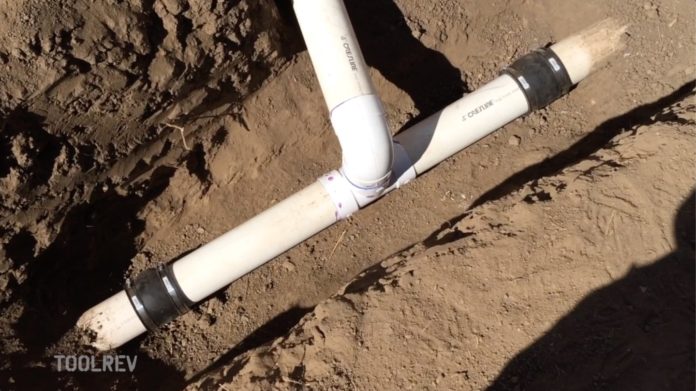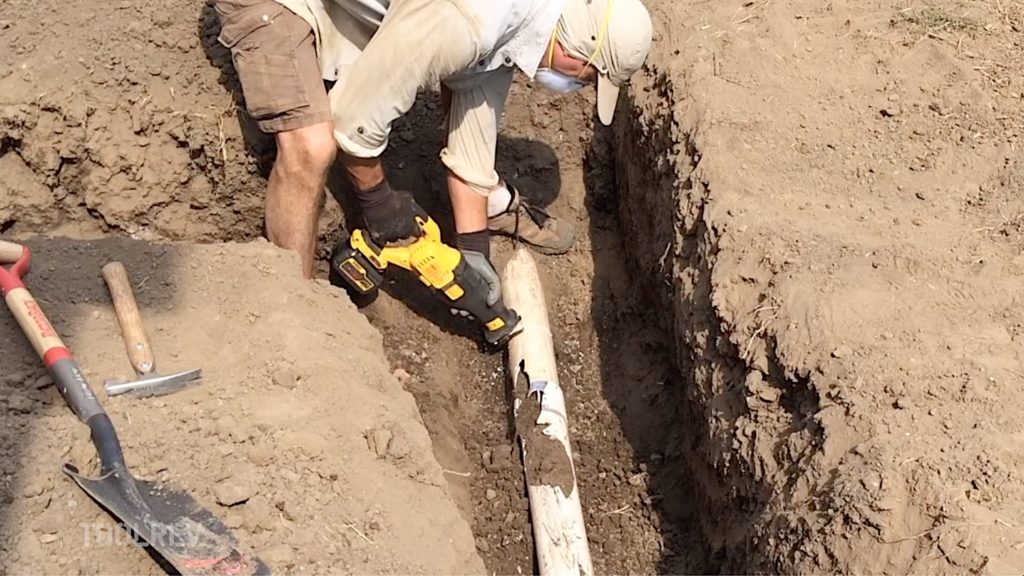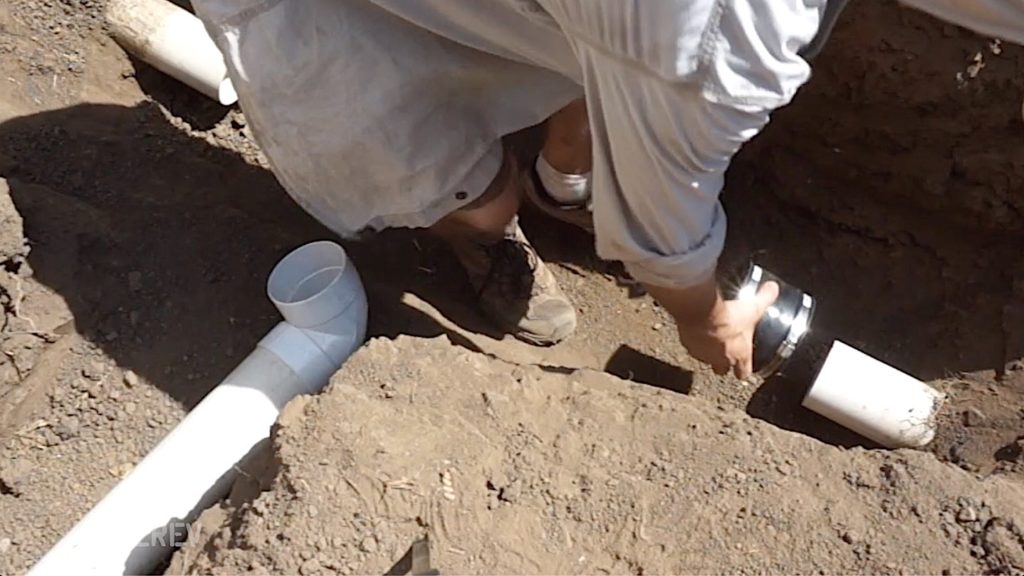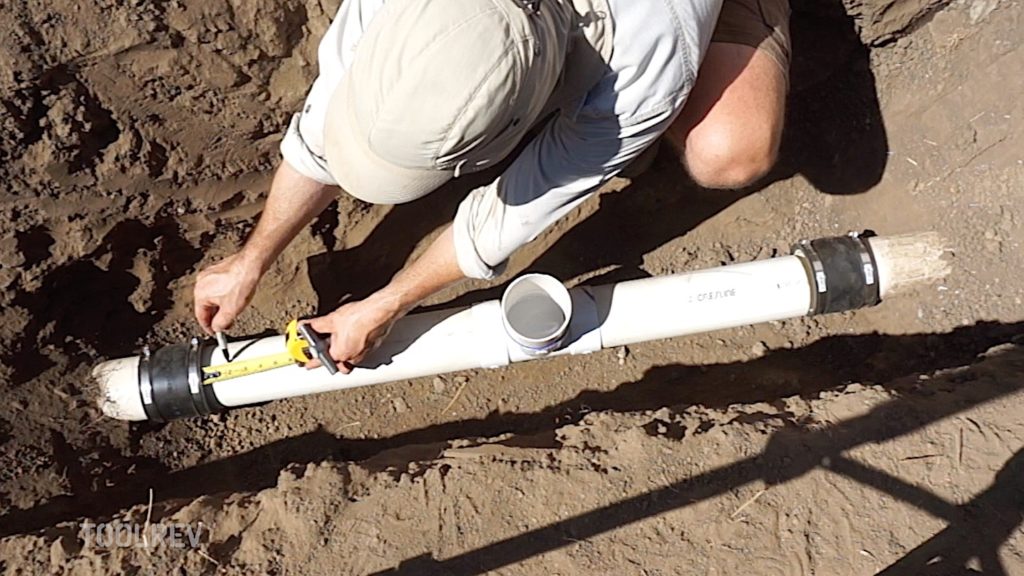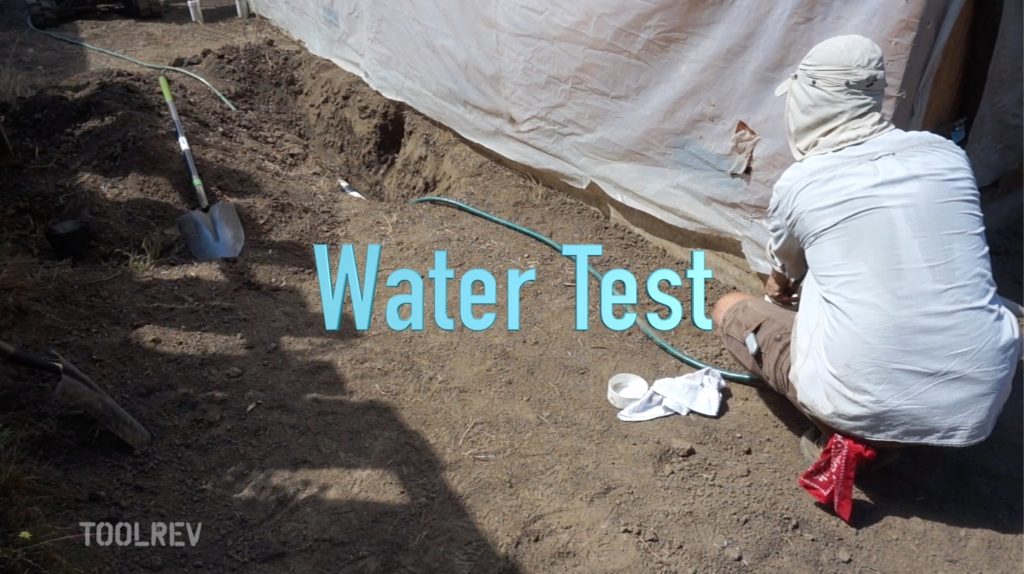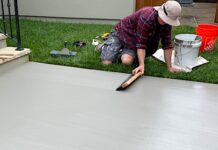Whether you’re connecting copper, cast iron, or plastic the principle is the same. Cut out a section of pipe, lay in the new pipe, and use couplers to seal the deal.
Step 1 – Cut Out Old Pipe
Remove a section of the existing pipe to the same size of the pipe you want to add in. Here I’m cutting out a section of PVC drain pipe using a cordless reciprocating saw with a fine tooth blade.
ToolRev earns commissions on purchases made through our links.
DeWalt 60V Reciprocating Saw, Tool Only (DCS389B)

Step 2 – Insert Couplings
Slide a coupling onto both sides of the remaining pipe. In this case I’m using 4 inch rubber couplings. The Fernco couplings used here are underground rated and a good option for this non pressurized rain gutter drain. For sewer line use banded couplings. Check local code.
Step 3 – Lay in New Pipe
Lay in the new pipe and mark a line on its end half the size of your coupling. Here I’m marking off 2 inches for my 4 inch coupling. Slide the couplings over the new pipe to your half way mark.
Step 4 – Tighten Couplings
Use a torque wrench that slips at the required tightness to secure the couplings. Pictured above is Pasco’s 5/16” wrench that sets the torque to 60 inch-pounds.
Pasco 7020, 60 lb, Torque Wrench
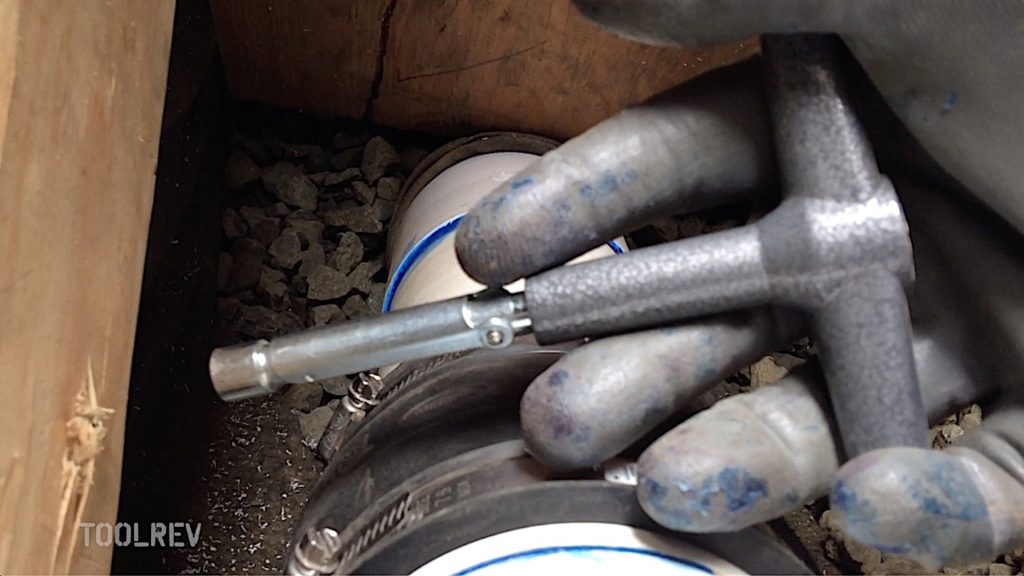
Step 5 – Test for Leaks
Whenever you tie into an existing drain line, e.g. this gutter drain, it’s a good idea to perform a water test to check for leaks at the new connections.
Congratulations, you did it!
If you have a pipe with a crack or a puncture check out this quick pipe fix.
